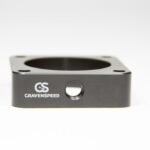The question of bear meat’s gustatory profile is one that often arises amongst adventurous epicures and those with a penchant for wild game. The simple answer? It is complex. Disentangling the nuances of bear flavor requires a delve into the animal’s diet, age, and preparation methods. Forget the simplistic notion of “gamey” – bear meat offers a symphony of tastes, a veritable cornucopia for the discerning palate.
Factors Influencing the Flavor Profile
The taste of bear is profoundly affected by several key variables, all interacting to determine the final gustatory experience. These include diet, age, sex, and the method of culinary preparation employed.
Diet: You Are What You Eat
Perhaps the most significant determinant of a bear’s flavor is its dietary intake. Bears are opportunistic omnivores, consuming a wide array of foods depending on seasonal availability. A bear whose diet consists primarily of berries and vegetation will yield a markedly different flavor profile compared to one that has gorged itself on fish, carrion, or even human refuse. Berries tend to impart a sweeter, more palatable flavor, while fish can lend a distinctly fishy or even rancid taste, particularly if the bear has been consuming salmon during spawning season. Similarly, a diet high in carrion can result in a strong, unpleasant taste.
Imagine the difference between a forager that dined exclusively on huckleberries and a creature that scavenged discarded picnic baskets. The former promises a subtly sweet, almost fruity nuance, while the latter… well, let’s just say it might be less than delectable.
Age and Sex: Maturity Matters
Older bears, particularly males, often possess a tougher and more strongly flavored meat compared to younger animals. This is due to the accumulation of hormones and connective tissue over time. Female bears, especially those that have recently given birth, may have a less desirable flavor due to the physiological demands of lactation and the depletion of fat reserves. Furthermore, the time of year a bear is harvested plays a role. Bears preparing for hibernation build up substantial fat reserves, which can influence both the flavor and texture of the meat. A bear harvested in the fall, brimming with stored energy, will likely taste richer than one taken in the spring after a long winter fast.
Think of it like this: a venerable bull elk versus a tender calf. The older animal will undoubtedly have a more robust, assertive flavor – a reflection of its life experience and physiological development.
Preparation is Paramount: Transforming the Wild
Regardless of the bear’s diet or age, proper handling and preparation are crucial to rendering the meat palatable. Bear meat is known to carry the parasite *Trichinella spiralis*, which causes trichinosis. Therefore, thorough cooking is absolutely essential to ensure safety. The USDA recommends cooking bear meat to an internal temperature of 160°F (71°C) to kill any potential parasites. This necessitates careful monitoring during the cooking process.
Beyond safety, the method of preparation significantly impacts the final flavor. Slow cooking methods, such as braising or stewing, are often preferred to tenderize the meat and break down tough connective tissue. Marinades can also be used to enhance the flavor and mask any undesirable gaminess. Some chefs recommend soaking the meat in saltwater or vinegar solutions to further mitigate strong flavors.
Imagine the difference between a hastily grilled bear steak and a slow-braised bear shoulder, infused with aromatic herbs and spices. The former risks being tough and intensely gamey, while the latter offers a tender, flavorful, and safe culinary experience.
So, What Does It *Actually* Taste Like?
Ultimately, describing the taste of bear is akin to describing the taste of “meat” in its broadest sense. It depends. The texture is often described as coarse, similar to venison but potentially tougher. The flavor can range from slightly sweet and pork-like to intensely gamey and almost mutton-like. Some individuals detect hints of beef, while others find the taste overwhelmingly wild and earthy. The fat, which can be abundant, can contribute significantly to the flavor, either enhancing the richness or adding an unpleasant greasiness, depending on the bear’s diet.
Consider it a culinary chameleon, adapting its flavor to its environment and the skill of the cook. A bear that has feasted on berries might offer a subtle sweetness reminiscent of pork, while one that has scavenged fish could present a flavor profile closer to strongly flavored lamb – with perhaps a hint of something…wilder.
A Shift in Perspective
The question of what bear tastes like is more than just a culinary curiosity. It prompts us to consider the intricate relationship between an animal’s diet, its environment, and its ultimate fate on the plate. It challenges our preconceived notions about “wild game” and encourages us to approach unusual ingredients with respect and understanding. Tasting bear is not merely about satisfying hunger; it’s about connecting with the natural world and appreciating the complexities of the food chain. It’s about embarking on a culinary adventure that transcends the ordinary.










Leave a Comment